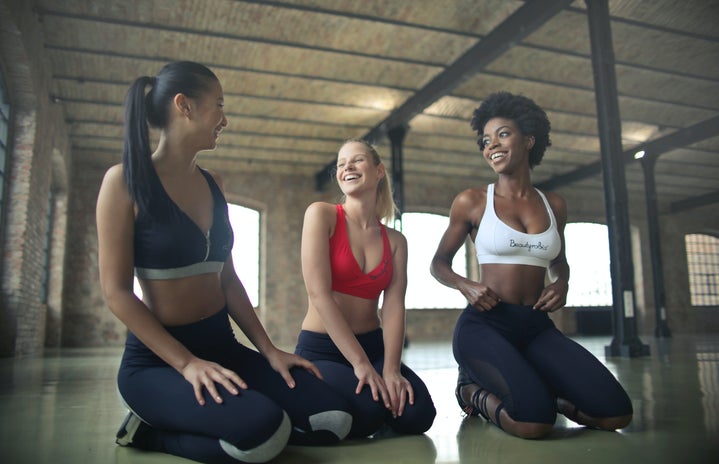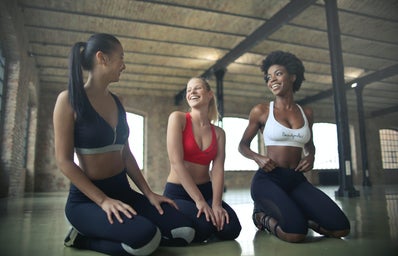There’s no doubt about it — breast cancer is scary, especially because the causes of breast cancer are largely unknown, making it difficult to pinpoint preventative behaviors for it. So what are some behaviors that we know do matter when it comes to preventing breast cancer? What can you be doing now to decrease your likelihood of breast cancer later in life? Dr. Elizabeth Neuger, a breast cancer specialist and general surgeon at the Everett Clinic, and Nicola Pytell, a breast cancer survivor, provide us with a list of 6 things you can do right now to lower your risk. Share this with your mother, sisters, friends, and the other women you care about!
Eat Right
“Eating healthy to keep your weight in a normal range is one of the best ways for women to decrease their risk of breast cancer,” says Dr. Neuger. Studies have shown that women with a higher body mass index (BMI) are more likely to develop breast cancer. In addition to being produced in your ovaries, estrogen is also produced in fat tissue. According to the National Cancer Institute, “Estrogen-sensitive tissues are therefore exposed to more estrogen stimulation in heavy women, leading to a more rapid growth of estrogen-responsive breast tumors.”
Your BMI is based on your height and weight — not whether or not you’re a size zero. You can easily measure your BMI with online calculator like the one provided by the U.S. Department of Health and Human Service. The number will let you know if you’re underweight, a healthy weight, overweight, or obese. If your BMI is higher than 25, you could be at a higher risk for breast cancer and should change your lifestyle habits by making sure to eat healthy foods and healthy fats.
Work it Out
Dr. Neuger also recommends exercising at least 3- 4 times a week for 30 minutes each time you work out. Go for moderate aerobic activity, like the elliptical machine or brisk walking. The point is to have a consistent workout — not to be sweating bullets! A study done by CBS of 15,000 women showed that women who get more than six hours of exercise a week, and have no family history of breast cancer, are 23 percent less likely to develop breast cancer than women who don’t exercise at all. Another study from the Fred Hutchinson Cancer Research Center in Seattle found that women who exercised regularly had a 22% decreased risk of breast cancer.
Drink in Moderation
“Drinking alcohol in moderationor not at all can reduce one’s risk of breast cancer,” says Neuger, although she acknowledges that this can be difficult for college students.
Simply remembering to drink less when you’re out on the town could have positive effects on your overall health and, in turn, on reducing your risk of breast cancer later in life. The Harvard Nurses’ Health study has shown consuming more than one alcoholic beverage a day can increase breast cancer risk by as much as 20-25 percent. Although the direct link to alcohol and breast cancer is still unclear, numerous studies continue to find a correlation between the two.
Do a Self Exam
Dr. Neuger also recommends that her patients do self exams about once each month. And although self exams can be a bit awkward, intimidating and scary, they could be your saving grace someday.
To give yourself a thorough self examination, use the pads of your middle three fingers. Move your fingers slowly in small coin-sized circles across your breasts to check for any abnormal lumps or bumps. It is also important to use different levels of pressure to reach all areas of the breast tissue, and to check yourself all the way from your collarbone to bra line and armpit to breast bone. Also keep in mind that breast tissue often has lumps of thick tissue, so if you feel a lump, check the other breast as well for comparison. Pay attention specifically to lumps that feel significantly harder than the rest of your breast. If you find something that you deem worrisome, schedule an appointment with your doctor.
“The key is to learn what your breasts feel like,” says Dr. Neuger. “After six to eight months of feeling your breasts, you will have a good idea of what is normal. Then just do self exams until you find a change. That’s what you should be looking for — a change — and you cannot find a change if you don’t know what is normal!”
“The best thing young women can do is be aware of any changes and funky feelings in their breasts, and know their own bodies,” says Pytell. “I found my own lump in the shower- though subsequently it was very difficult for my doctor to even find – so it was me who saved me in the end. Keep an eye out.”
Jenna Hoops, a collegiette from the University of Maine, has a 24-year-old sister who was recently diagnosed with breast cancer. She agrees that the most important preventative measure for breast cancer is self exams, especially because her sister found her own lump during a self exam. “My sister is lucky she found her tumor when she did,” she says. “But if she hadn’t been aware of her body, she could have missed ituntil it was in its later stages.”
Find Out Your Family History
Your family history also plays a major role in the risk of breast cancer, so make sure that you are aware of your family’s medical histories. Having an aunt, grandmother or mother who has been diagnosed with breast cancer can severely increase your likelihood of being diagnosed. Talk to the women in your family about their history with breast cancer, and when meeting with your primary care doctor, discuss your family history in order to get a sense for if you are a high or low risk patient.
Get a Mammogram
Professionals agree that there is no exact age in which it is appropriate for women to begin getting mammograms. Dr. Neuger suggests talking with your primary care doctor to get a better sense for your level of risk, and then going from there.
“There are high risk patients and low risk patients,” she explains. “And the recommendations for these two types of patients are different. In a low risk patient, it is reasonable to do the first mammogram at age 40, or possibly 35 on rare occasions. What most people don’t understand is that mammograms work best on older breasts! As the breasts sag, they become fattier and less dense which makes the mammograms easier to read.”
Chances are you have a few years before it’s a necessary precaution for you to take, but it’s always important to discuss these things with your doctor in order to get a sense for your level of risk. Younger women who are worried about breast lumps can also get an ultrasoundinstead of a mammogram, which is a scan that works better on younger breasts.
Preventing breast cancer isn’t as simple as remembering to take your daily vitamin. It’s the result of making healthy, seemingly small, day-by-day choices, like saying no to a second drink or waking up an extra hour early to hit the gym.

